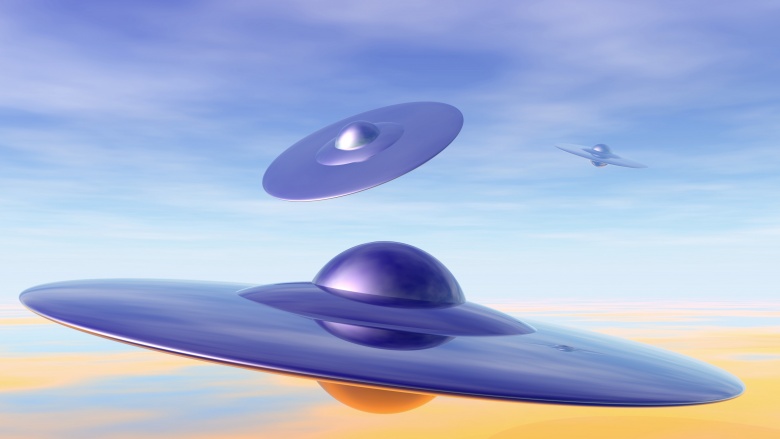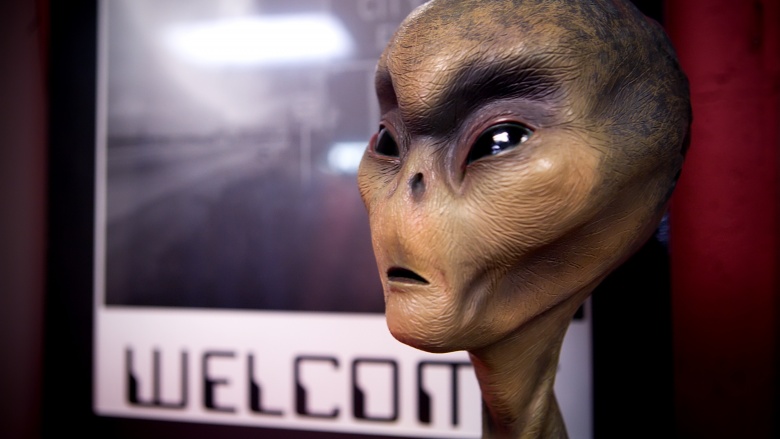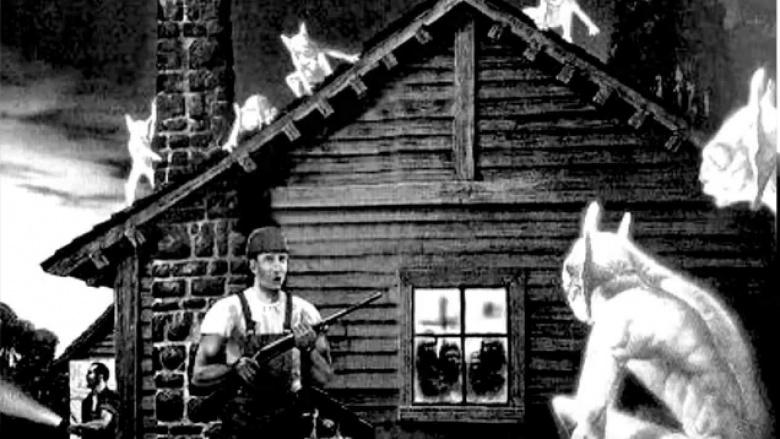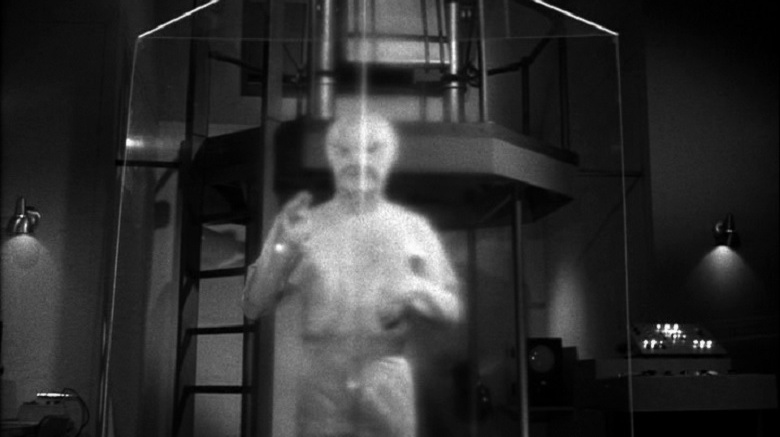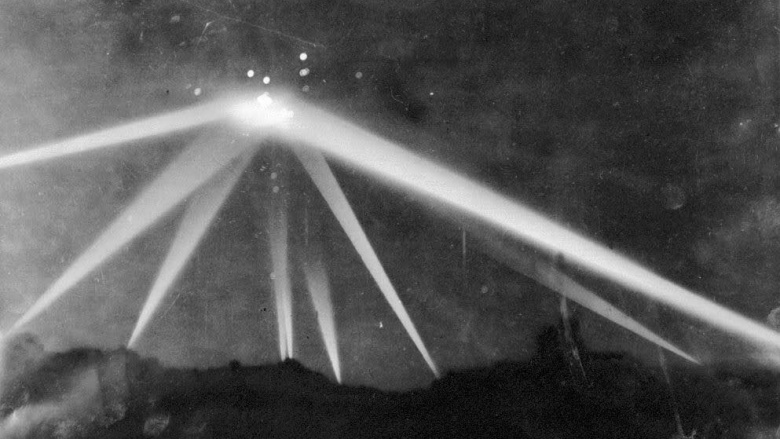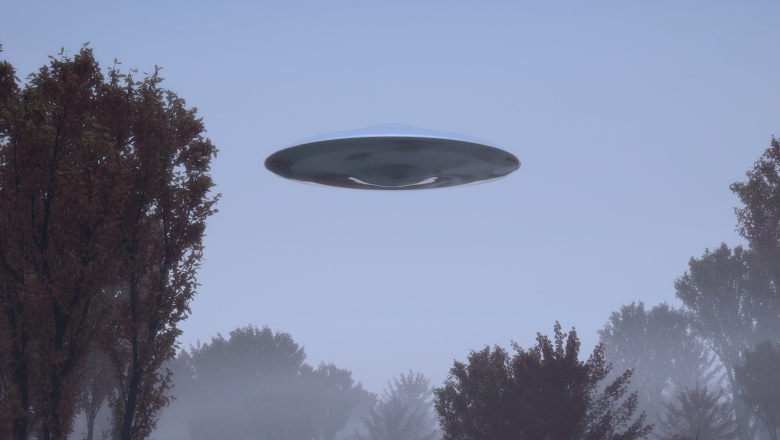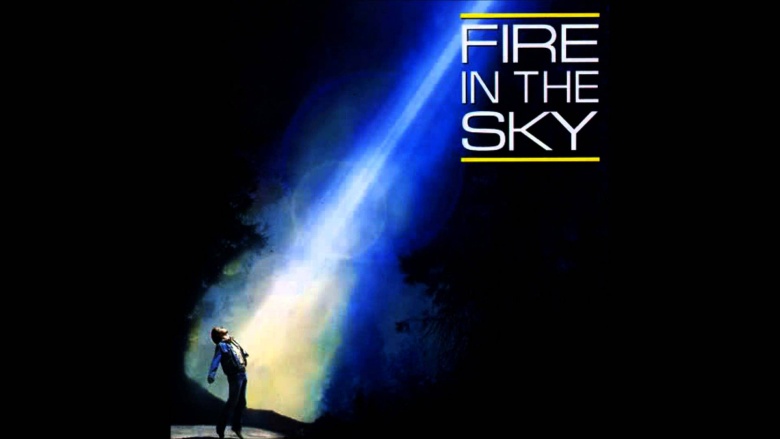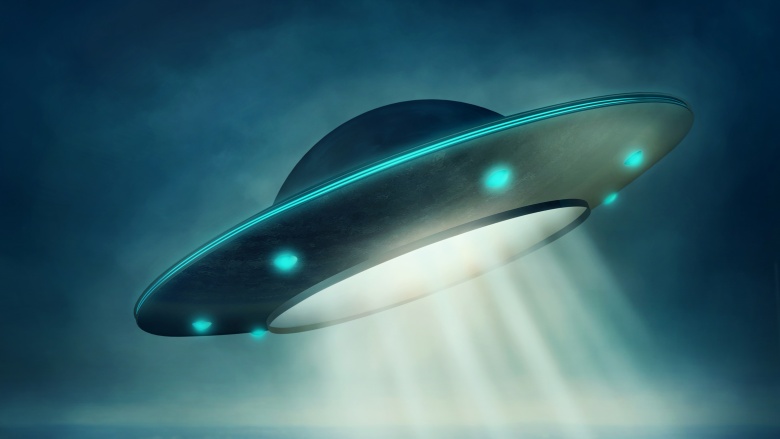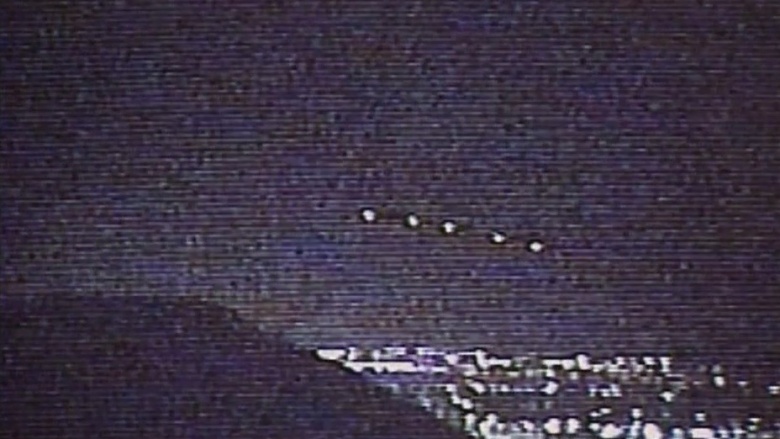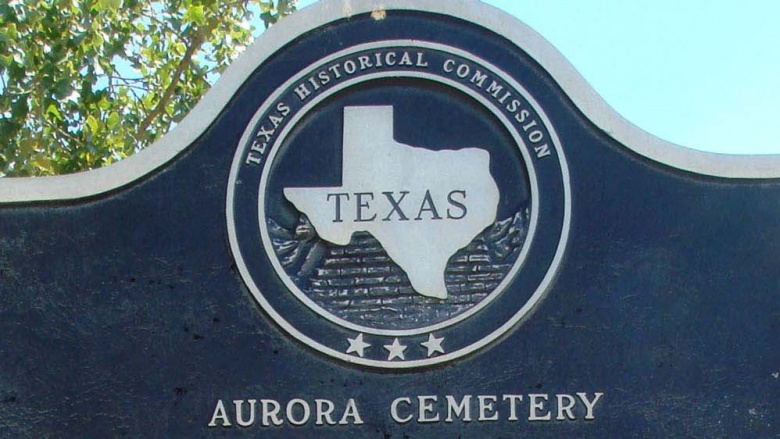Real Stories Behind UFO Sightings
UFOs have been a mainstay of science fiction since at least the 1950s. Their persistence in popular culture is due to real-life witnesses sighting and identifying these supposedly unidentified flying objects as extraterrestrial spacecraft. Is such an outlandish claim the only explanation these sightings? As it turns out, many of the most famous UFO cases can be attributed to more mundane phenomena than extraterrestrials failing to turn on their vehicles' invisibility shields. Below are some notable UFO sightings and close encounters, along with alternative explanations.
Mount Rainier Sighting
The terms "flying saucers" and "UFOs" became nearly synonymous with one another during the twentieth century. The correlation likely originates from a June 1947 UFO sighting near Mount Rainier in Washington state. While flying his plane, Kenneth Arnold saw a group of objects soaring about 20-25 miles north of him in a V-formation. He estimated the objects were traveling about 1700 miles per hour, and described them as crescent-shaped. He notably stated that they flew "like a saucer if you skip it across the water."
Arnold reported the sighting, and the news spread like wildfire. A headline writer or editor somewhere misunderstood Arnold's description of the UFOs' movement and wrote that the objects looked, not moved, like saucers. Thus, the phenomenon of flying saucers entered popular culture. But what were the objects that Arnold saw? Most likely it was a flock of pelicans, and Arnold simply misjudged the size and distance.
The Roswell Incident
Perhaps the most famous UFO incident of all time is the alleged alien spacecraft that crashed near Roswell, New Mexico in 1947. In June of that year, a rancher named William Brazel found some debris about 75 miles north of Roswell. Roswell Army Air Field sent investigators after they got word of the incident. The local newspaper, the Roswell Daily Record, initially reported that the debris was from a flying saucer. It later corrected this story, writing that the debris was actually a destroyed weather balloon.
The U.S. government disclosed in a 1994 report that the balloon was part of the once-classified Project Mogul, which involved attaching surveillance equipment to high-altitude balloons to detect Soviet nuclear tests. No one at Roswell Army Air Field knew anything about Project Mogul, so a weather balloon was the most rational explanation. Some UFO proponents, nevertheless, still contend that the U.S. Army covered-up the spacecraft's crash. The reality is that the "incident" was mostly forgotten until the National Inquirer re-published the uncorrected version of the story by the Roswell Daily Record about thirty years later. Conspiracy theories then began to multiply like rabbits.
Hopkinsville Goblins
On August 21, 1955, the Sutton family was having a gathering of about eleven relatives and friends at their home near Hopkinsville, Kentucky. One of the guests, Billy Ray Taylor, went out to to get a pail of water from the family well, and allegedly saw a flying saucer streak through the sky and land nearby. Shortly afterward, at about 8 p.m., a horde of four-foot tall, gremlin-like aliens began to surround the house — the group shot at the creatures, but the aliens seemed impervious to bullets. The family then fled and reported the incident to the police.
The subsequent investigation by the local police found no evidence of the creatures. Most likely, the sighting was the combination of alcohol intoxication and an encounter with two great horned owls. These owls are nocturnal, territorial, and quite large. Running up on one at night would certainly be alarming. Furthermore, a meteor shower was occurring during that time, which would explain the "flying saucer" that Taylor witnessed.
Betty and Barney Hill
Perhaps the most famous UFO abductees are Betty and Barney Rubble — er, Hill. The couple was allegedly taken by aliens while returning from vacation to their home in New Hampshire, on September 19, 1961. The couple claimed to have seen a light in the sky and, after returning home, they realized that they had lost two hours of time. Under hypnosis, more than two years later, the Hills recounted that aliens took them aboard their ship and subjected them to experiments. They described the aliens as short, grey beings with big, black eyes. Does this sound familiar? It should, because this description is consistent with what is popularly known as "grey" aliens. The Hills are the ones largely responsible for popularizing this depiction of extraterrestrials.
The couple's tale is suspect, however, given that just a few days before their hypnosis sessions, on February 10, 1964, the popular science fiction show, The Outer Limits, broadcast an episode entitled "The Bellero Shield" that included a similar-looking creature. Moreover, Betty Hill drew a star map that she claimed to have seen on board the alien ship. Many UFO proponents argue that this is compelling evidence that her abduction took place. Scientist Carl Sagan, however, notably debunked Betty's map. Simply put, there is no evidence that the Hill abduction ever occurred. Nevertheless, the Hills' story was adapted into a popular book, Interrupted Journey, and the upcoming movie Captured.
The Battle of Los Angeles
During the night of February 24, 1942 and into the early morning of February 25, the U.S. military fired about 1400 anti-aircraft shells into the skies above Los Angeles. When the smoke cleared, there were thousands of distraught citizens, but no enemy aircraft wreckage littering the streets. The Los Angeles Times displayed the above picture in its February 26, 1942 issue, which appears to show searchlights honing in on an aircraft of some sort. Some UFO enthusiasts believe that the photo shows the military shooting at a flying saucer. More likely, the false alarm was caused by the sighting of a meteorological balloon (see pages 285-286 of this Air Force history document) combined with a case of twitchy nerves. The "Battle of Los Angeles" occurred less than three months after the Battle of Pearl Harbor. Tensions were high, as many believed that another attack by the Japanese military on the U.S. west coast was imminent.
But what about the picture? Back then, the editors of the Times used ink to darken the sky, and paint to brighten the searchlights and lens flares. The result is an image that seems to depict something in the sky. It's more difficult to reach this conclusion after viewing the original, untouched image.
Westfall UFO
About 200 people allegedly saw a UFO in Melbourne, Australia on April 6, 1966. The witnesses — mostly students and teachers of the Westall High and State schools — reported watching three metallic objects drifting through the sky for about 20 minutes, starting at 11 a.m. The most likely explanation is that these UFOs were balloons from the HIBAL program — a joint US-Australian operation from 1960-1969 that sent large, metallic balloons up into the atmosphere to measure radiation levels. One balloon drifted off course and briefly touched down near the schools. It then took off again and several aircraft pursued it, which explains the multiple sightings. Plus, we have to consider the overactive imaginations of the children present at the time.
"Fire in the Sky"
In 1975, Travis Walton was reportedly abducted by a UFO while working as a lumberjack in Arizona. Six of his friends and co-workers claimed to have witnessed his abduction. Walton reappeared several days later, and the story he told of being subjected to experiments by extraterrestrials eventually became the basis for his 1978 book, The Walton Experience, and the 1993 movie, Fire in the Sky.
However, the whole incident was probably a hoax perpetrated by Walton and his friends for financial gain. The story appeared in the National Inquirer days after the alleged incident — the publication awarded Walton and his friends $5,000 for their story, after the group passed polygraph tests that the tabloid funded. It is has also been reported that several members of the Walton family were UFO enthusiasts prior to Travis's abduction. The totality of this information, combined with a lack of testable evidence and the proven fact that polygraph results are totally useless, casts doubt on Walton's story.
William Schaffner: MIA
William Schaffner was a pilot in the United States Air Force who, in 1970, was stationed at Royal Air Force Base Binbrook in Lincolnshire, England. UFO enthusiasts argue that on September 8, 1970, Schaffner was sent to intercept an unknown object over the North Sea, and was then abducted by extraterrestrials. Schaffner's plane, a RAF Lightning, was recovered virtually undamaged from the bottom of the sea. Most notably, the cockpit canopy was shut, meaning Schaffner hadn't ejected. Supporters of the abduction theory point toward the plane's pristine condition, combined with the absence of a body, to be evidence that the UFO scooped up Schaffner.
A BBC investigation, however, determined that Schaffner died due to a series of unfortunate events. Schaffner was not in pursuit of a UFO, but was engaged in an exercise that he was not sufficiently trained to complete. He attempted to fly low, under his target (a Shackleton reconnaissance aircraft), but hit the sea. His ejector seat failed, leading him to escape from the cockpit and drown shortly afterward.
The Phoenix Lights
For about 106 minutes on the night of March 13, 1997, several hovering lights appeared in a V-shaped formation in the skies above Phoenix, Arizona. The Phoenix Lights, as they came to be called, are notable because hundreds of people witnessed and even videotaped the eerie event. Did these lights belong to a huge, silent UFO that wanted to get a closer look at the Phoenix area, or is there a more prosaic explanation?
It may be disappointing to some, but these lights were flares used by the military. More specifically, the flares seen by witnesses in 1997 were likely left from a training session by the visiting Maryland Air National Guard. The flares seem to be suspended in the night sky, because they are attached to parachutes that slow their descent.
UFO Crash in Aurora, TX
The small town of Aurora, Texas is perhaps most notable for an UFO that allegedly crashed into a windmill there in 1897. Several paranormal television programs, including the UFO Files, UFO Hunters, and Ancient Aliens have dedicated episodes to the crash. S.E. Haydon first reported the incident in an article for the Dallas Morning News in 1897. He claimed that the townspeople buried the sole occupant of the crash — possibly a Martian — in the local cemetery.
Haydon's story just sounds like a tall tale, so it should come as no surprise that he likely created it out of whole cloth. As a Time article from 1979 quoted one Aurora resident, Etta Pegues: "Haydon wrote it as a joke and to bring interest to Aurora. The railroad bypassed us, and the town was dying." Another theory is that Haydon and his friend, Judge J.S. Proctor, whose windmill the "alien" spacecraft destroyed, were simply trying to amuse themselves and their peers. Proctor wrote a similar far-fetched article about the crash in his local newspaper, the Aurora News. Either way, no one has been able to find the alien's remains, if they even exist, in the town's cemetery. Although those Martian flowers may be a dead giveaway.

